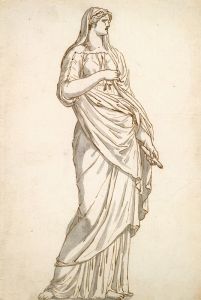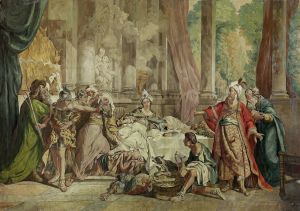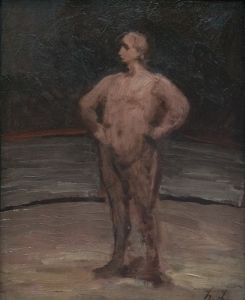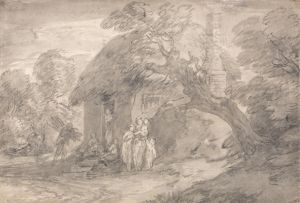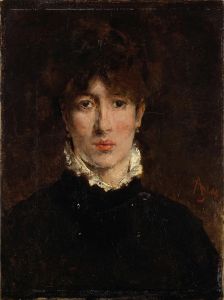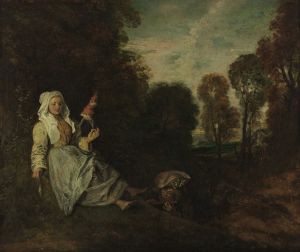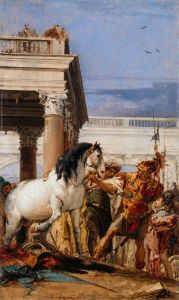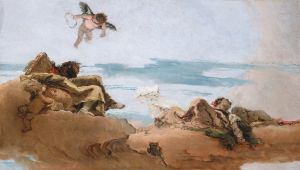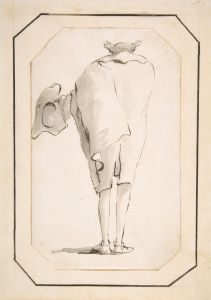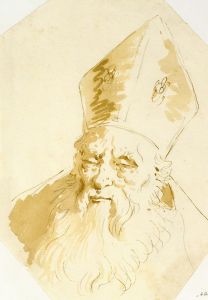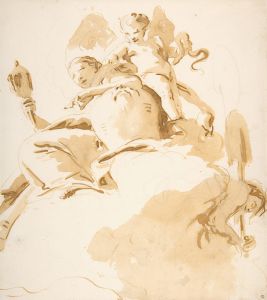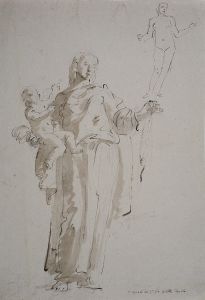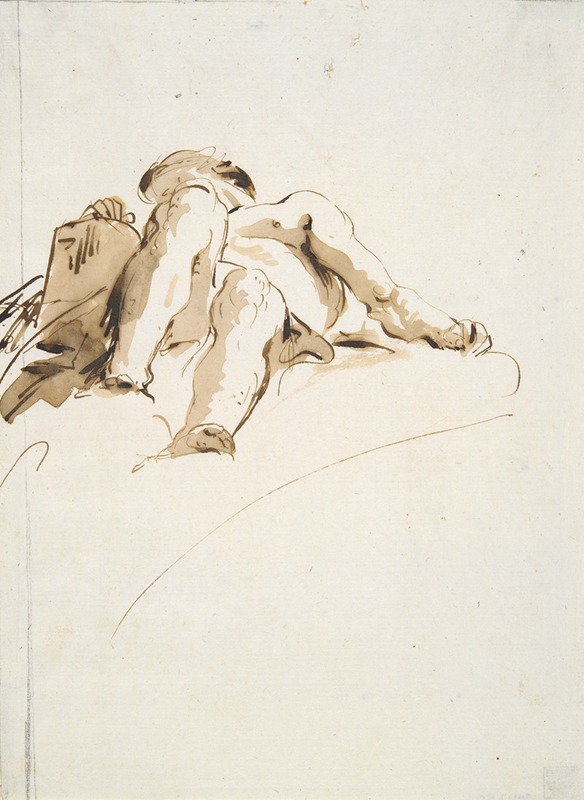
Reclining male nude with right hand resting on a stone tablet, seen from below
A hand-painted replica of Giovanni Battista Tiepolo’s masterpiece Reclining male nude with right hand resting on a stone tablet, seen from below, meticulously crafted by professional artists to capture the true essence of the original. Each piece is created with museum-quality canvas and rare mineral pigments, carefully painted by experienced artists with delicate brushstrokes and rich, layered colors to perfectly recreate the texture of the original artwork. Unlike machine-printed reproductions, this hand-painted version brings the painting to life, infused with the artist’s emotions and skill in every stroke. Whether for personal collection or home decoration, it instantly elevates the artistic atmosphere of any space.
Giovanni Battista Tiepolo's Reclining Male Nude with Right Hand Resting on a Stone Tablet, Seen from Below is a preparatory drawing attributed to the renowned Venetian artist of the 18th century. Tiepolo, celebrated for his mastery of fresco painting and his dynamic compositions, often created preparatory sketches and studies to refine his ideas and compositions before executing larger works. This particular drawing exemplifies his skill in depicting the human form and his ability to render dramatic perspectives.
The artwork portrays a reclining male nude, viewed from a low vantage point, with his right hand resting on a stone tablet. The figure's pose and musculature are rendered with precision, showcasing Tiepolo's deep understanding of anatomy and his ability to convey movement and tension. The perspective, which emphasizes the figure's foreshortened proportions, is a hallmark of Tiepolo's innovative approach to composition, often designed to create a sense of grandeur and immediacy in his works.
This drawing is believed to have been created as a study for a larger composition, possibly a fresco or an altarpiece, though the specific project it was intended for remains uncertain. Tiepolo frequently used red chalk, pen, and ink in his preparatory works, and this piece is no exception, demonstrating his fluid and confident draftsmanship. The use of light and shadow in the drawing highlights the contours of the figure, adding depth and dimensionality to the composition.
As with many of Tiepolo's preparatory works, this drawing provides insight into his creative process and his ability to experiment with poses and perspectives. It reflects the artistic trends of the Rococo period, characterized by elegance, movement, and a focus on the human figure. Tiepolo's influence extended beyond Italy, and his works were highly sought after by patrons across Europe, cementing his reputation as one of the leading artists of his time.
The exact date of this drawing is not documented, but it likely falls within the period of Tiepolo's mature career, when he was actively producing both monumental frescoes and smaller-scale works. Today, this drawing is valued not only as a study but also as a standalone example of Tiepolo's artistic brilliance. It is preserved in a collection that highlights the artist's contributions to the art world, though the specific institution or private collection housing it is not definitively identified in available records.





